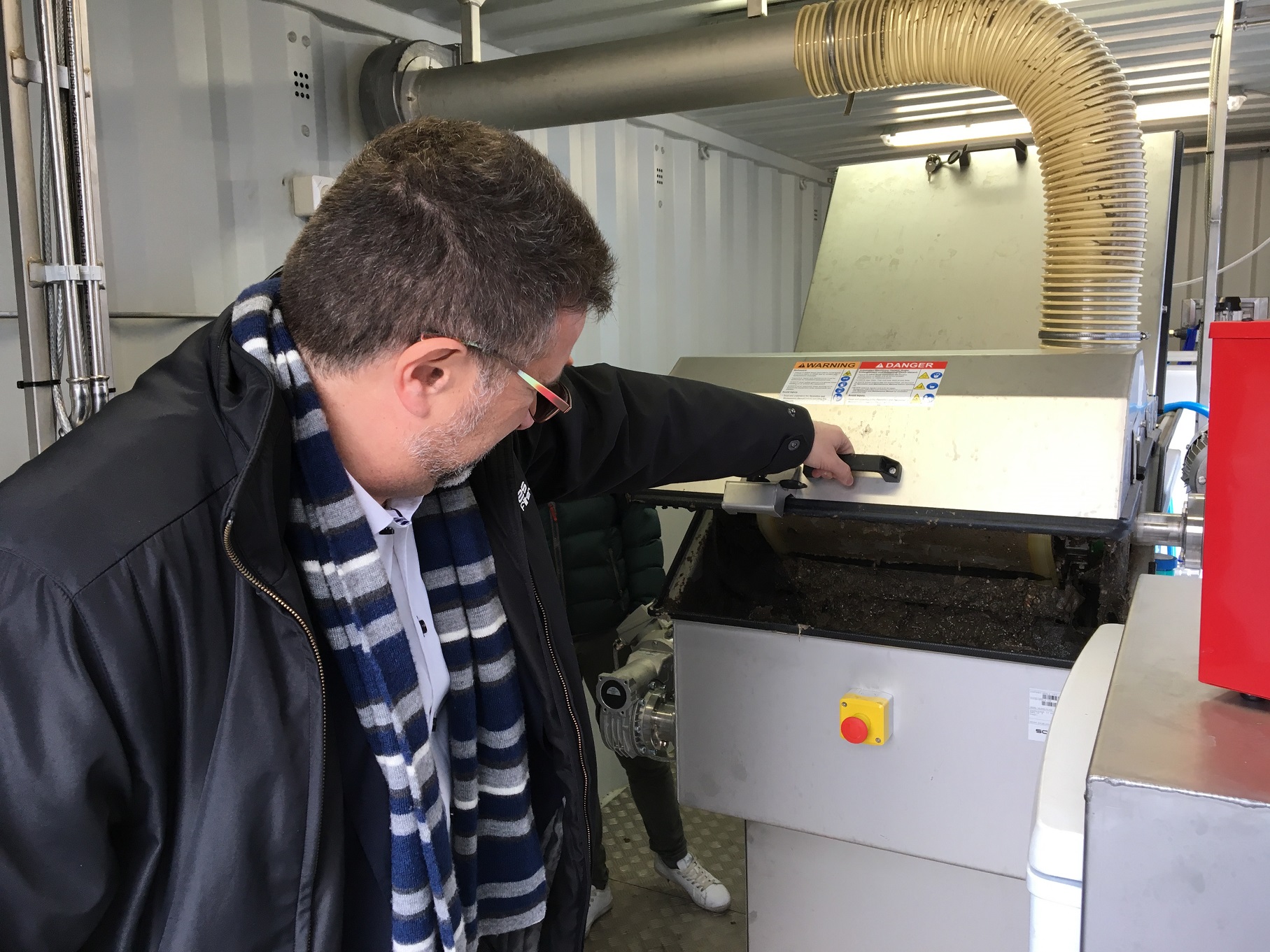At the Carbonera Water Resource Recovery Facility (WRRF), the Salsnes Filter system is installed as part of a SMART-Plant demonstration system that was officially inaugurated February of 2018 in the Province of Treviso, Italy, in the presence of officials from the European Commission and the Ministry of the Environment. Over 180 participants attended the event, which included a workshop and a Facility tour.

A workshop event hosted over 180 attendees including representatives from the European Commission and the Ministry of the Environment.
Becoming a Water Resource Recovery Facility
SMART-Plant is a project that’s aim is to demonstrate the viability of a circular wastewater treatment model. Traditional wastewater treatment plants are converted into Water Resource Recovery Facilities, where products such as cellulose, biopolymers and nutrients are recovered to then go on to become commercial products in the construction, chemical and agriculture markets.

Attendees tour the WRRF’s new demonstration systems.
Recovering PHA – A Raw Material for Bioplastics
The Salsnes Filter system is part of the SMARTech 5 demonstration, performing primary treatment by separating fine cellulose fibers from toilet paper in the wastewater to produce a highly-concentrated cellulosic sludge. This sludge contains ~70% cellulose versus settled primary sludge which contains around 35%.

A SF1000 Salsnes Filter installed at the Carbonera WRRF as part of a SMART-Plant demonstration project.
The primary sludge is fed into a fermentation reactor where biodegradable solids are converted into volatile fatty acids. The liquid phase of the fermentation unit is used as a carbon source for nitrogen removal, so the WRRF doesn’t need to purchase methanol, saving costs and reducing safety management. The liquid phase also accumulates around 1.0 kg/day of Polyhydroxyalkanoates (PHA), a raw material that can be used in the production of bioplastics.

Stefano Salvatore, our Business Development Manager, showing the highly-concentrated cellulosic primary sludge from the Salsnes Filter system.
An EU Horizon 2020 Programme
In total, there are nine SMART-Plant demonstration systems at seven Plants across Europe. Funding for the project comes from the European Union’s Horizon 2020 research and innovation programme under grant agreement No 690323.
The project was initiated by the Italian water utility Alto Trevigiano Servizi in cooperation with the University of Verona and the Veneto regional government. It has grown into a collaboration of 25 partners in ten countries including other universities, research companies, engineering firms, water utilities and manufacturers.
Further Reading:



